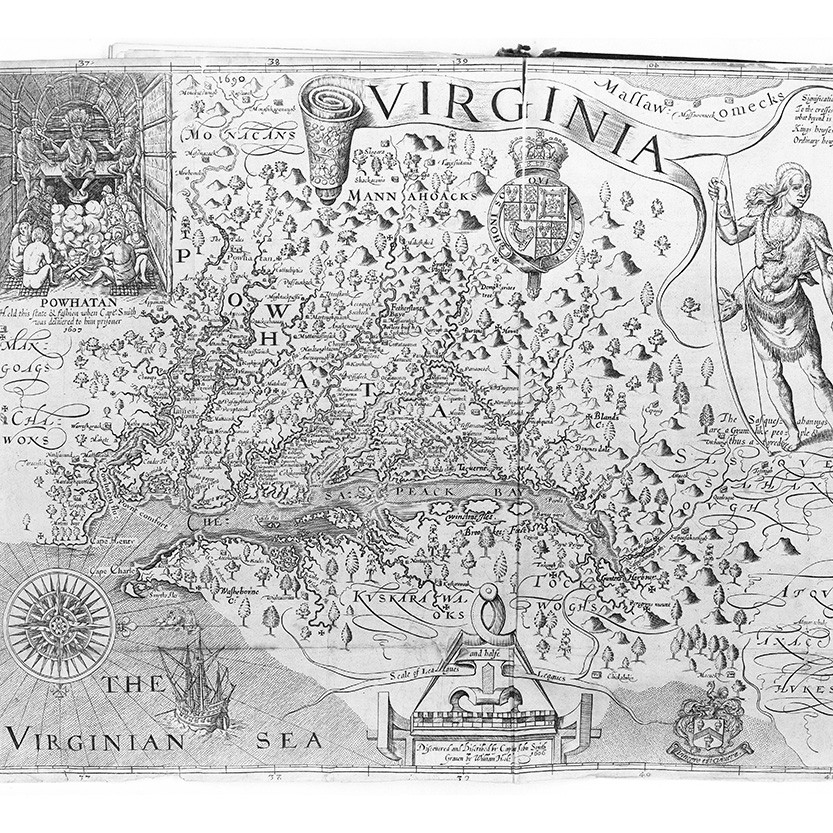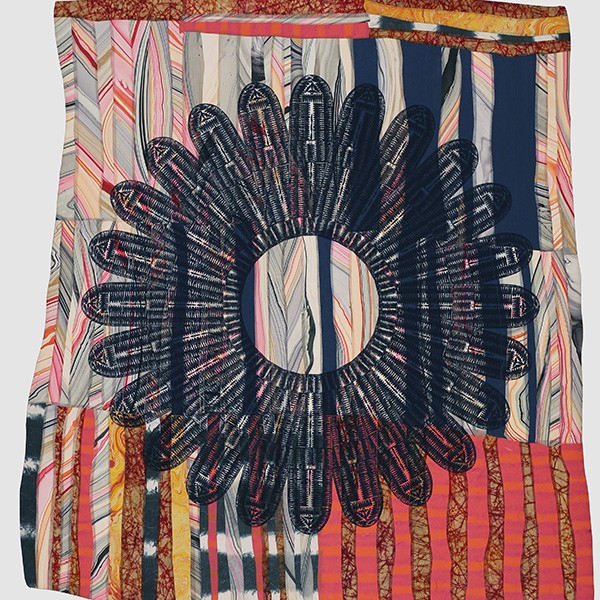An Exhibition Commemorates the Legacy of Jamestown
"20 and Odd: The 400-Year Anniversary of 1619" at the LeRoy Neiman Gallery documents the arrival of the first Africans in the American colonies.

When the earliest documented Africans arrived in 1619 in Jamestown, Virginia, the first permanent English settlement in the American colonies, they were recorded as “20 and odd Negroes,” who disembarked from an English pirate ship flying a Dutch flag.
20 and Odd: The 400-Year Anniversary of 1619 commemorates the arrival of these Africans who landed in Jamestown. The exhibition opens at the LeRoy Neiman Gallery on August 30, 2019 and will be on view through September 30, 2019. Through images, documents and other archival materials, and contemporary art, the exhibition explores this event and its historical implications from the 17th through the 21st centuries.
“The 20 and odd Africans signify the integral importance of Western Africa in the development and prosperity of the New World and, more specifically, the central role of Africans in transforming what would become the United States into a political, cultural and economic world power,” said Kalia Brooks Nelson, an adjunct professor in the African American and African Diaspora Studies Department who curated the exhibition.
The works on display are from collections that are housed at Columbia’s Rare Book and Manuscript Library as well as collections and archives at the New York Public Library and the Library of Congress.
Image Carousel with 8 slides
A carousel is a rotating set of images. Use the previous and next buttons to change the displayed slide
-
Slide 1: David and John Deas, Broadside announcing of the sale of 94 negroes from Sierra Leone, 1769, digital print of engraving. Courtesy of the Rare Book and Manuscript Library
-
Slide 2: Sanford Biggers, The Floating World: The Pasts They Brought with Them, 2013, paper collage and silkscreen with hand coloring. Courtesy of the LeRoy Neiman Center for Print Studies
-
Slide 3: Howard Pyle, Landing negroes at Jamestown from Dutch man-of-war, 1619, 1901, digital reproduction of halftone photomechanical print. Courtesy of the New York Public Library
-
Slide 4: Thomas Askew, African American girl, half-length portrait, with right hand to cheek, with illustrated book on table, 1899 or 1900, digital reproduction of gelatin silver print. Courtesy of the Library of Congress
-
Slide 5: William Hole and John Smith, Map of Virginia as described by John Smith showing the Chesapeake Bay, Potomac River, other geographic features, and a vignette of the native leader, Powhatan, in council, 1624 (1606), digital print of engraving. Courtesy of the Library of Congress
-
Slide 6: Adama Delphine Fawundu, Mende Ooman #2, 2017, archival pigment on 100% cotton fiber paper. Courtesy of the Artist and Crush Curatorial
-
Slide 7: John Jea, frontispiece of The Life, History, and Unparalleled Sufferings of John Jea, the African Preacher. Compiled and Written by Himself (Portsea, c. 1800), digital print of original document. Courtesy of the Rare Book & Manuscript Library
-
Slide 8: Sanford Biggers, The Floating World: Lotus (125th), 2013, paper collage and silkscreen with hand coloring. Courtesy of the LeRoy Neiman Center for Print Studies

David and John Deas, Broadside announcing of the sale of 94 negroes from Sierra Leone, 1769, digital print of engraving. Courtesy of the Rare Book and Manuscript Library

Sanford Biggers, The Floating World: The Pasts They Brought with Them, 2013, paper collage and silkscreen with hand coloring. Courtesy of the LeRoy Neiman Center for Print Studies

Howard Pyle, Landing negroes at Jamestown from Dutch man-of-war, 1619, 1901, digital reproduction of halftone photomechanical print. Courtesy of the New York Public Library

Thomas Askew, African American girl, half-length portrait, with right hand to cheek, with illustrated book on table, 1899 or 1900, digital reproduction of gelatin silver print. Courtesy of the Library of Congress

William Hole and John Smith, Map of Virginia as described by John Smith showing the Chesapeake Bay, Potomac River, other geographic features, and a vignette of the native leader, Powhatan, in council, 1624 (1606), digital print of engraving. Courtesy of the Library of Congress

Adama Delphine Fawundu, Mende Ooman #2, 2017, archival pigment on 100% cotton fiber paper. Courtesy of the Artist and Crush Curatorial

John Jea, frontispiece of The Life, History, and Unparalleled Sufferings of John Jea, the African Preacher. Compiled and Written by Himself (Portsea, c. 1800), digital print of original document. Courtesy of the Rare Book & Manuscript Library

Sanford Biggers, The Floating World: Lotus (125th), 2013, paper collage and silkscreen with hand coloring. Courtesy of the LeRoy Neiman Center for Print Studies
“These objects provide insight into what the texture of life would have been like for Africans in the conflicted space of the New World, and are also the basis from which to consider contemporary art that reflects attitudes, discord, popular culture and personal accounts about Africa and the descendants of African people as foundational actors in the emergence of the Atlantic World,” said Nelson.
Artists with pieces in the exhibition include Sanford Biggers, Thomas Askew, Pamela Phatsimo Sunstrum, Hank Willis Thomas, Paula Wilson, Hale Woodruff and Adama Delphine Fawundu, a 2018 School of the Arts graduate, whose site-specific mural, Tales from the Mano River, will cover the walls of the lobby in Miller Theatre through June 2020.